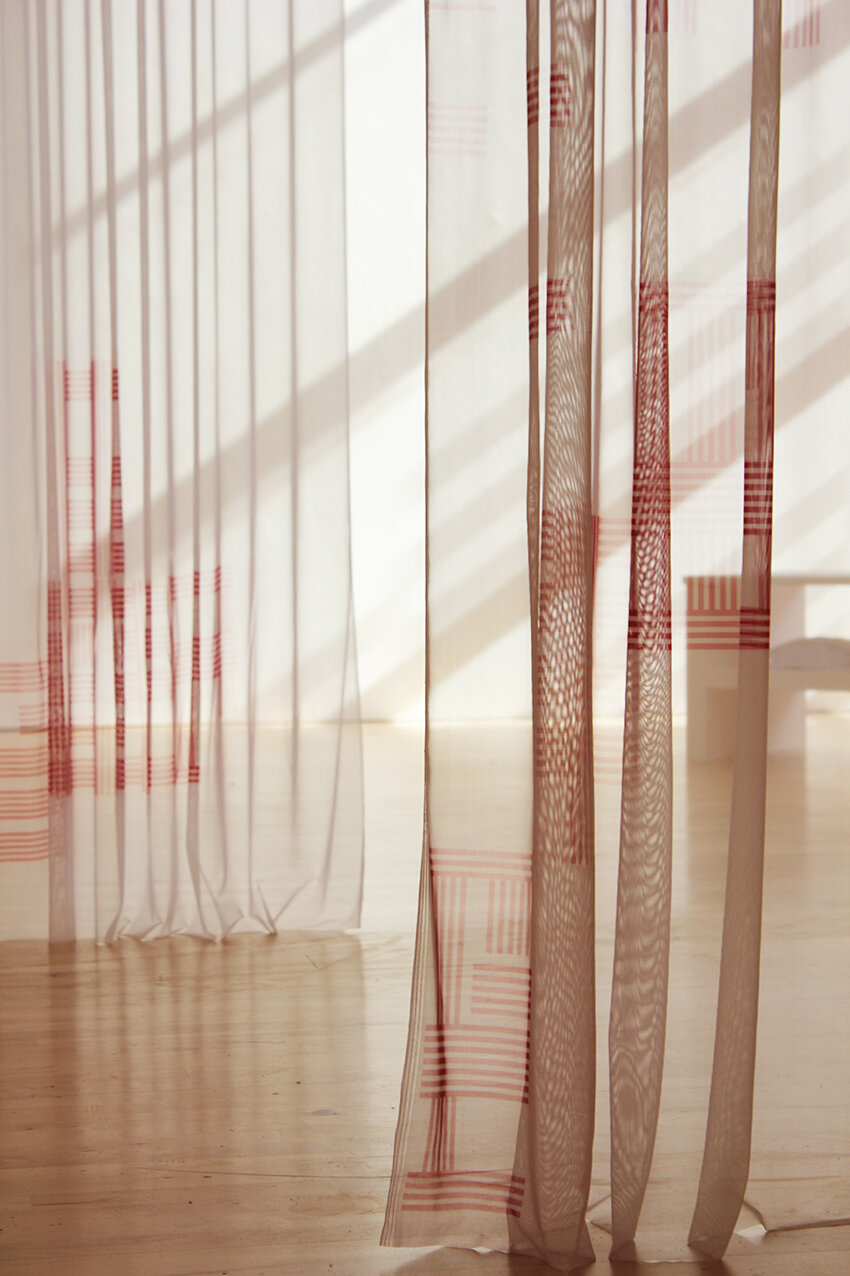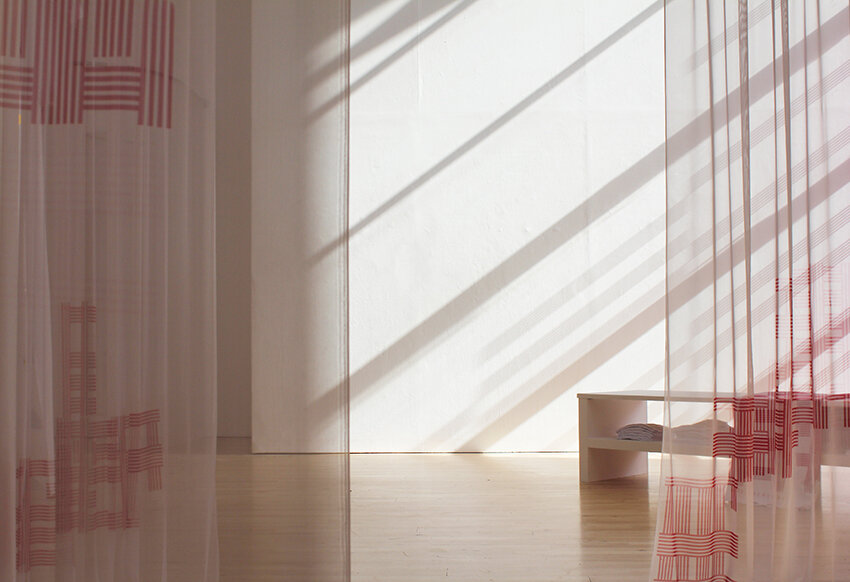
Orishirishi
Orishirishi is a project and solo exhibition for the Stanley Picker Gallery. It casts a lens on the insatiable desire to maintain a sense of place and ownership over one’s identity through outward public personas.
The title of the show is a Nigerian (Yoruba) term, loosely meaning ‘an assortment of different things’. This collection of textiles classifies materials as an arrangement of experiences and comprises of both fabrics and, for the first time, garments created through the combination of various techniques, such as multi-media printing and acoustic textiles.


Responding to the architectural layout of the Gallery, the exhibition stages a very specific moment of the experience of a clothes shop by introducing a series of changing rooms accompanied by large mirrors, a seating area with African fashion magazines, and furniture pieces displaying clothing and blocks made of iroko – a large hardwood tree from the west coast of Africa that can live up to 500 years and is believed to have supernatural properties – employed by t to block-print patterns. As socially-coded, designated areas for changing one’s clothes away from other people’s eyes, dressing rooms provide opportunities for engaging with and styling one’s public image in private; changing persona through choices of clothing.




Reflecting on fashion, textiles and the built environment, Orishirishi looks at unexpected parallels between different social groups. Driven by an interest in the social implications of cross-cultural identities, as part of fellowship research the project travelled to Delhi, India to work with a group of young people and artist Aastha Chauhan from Khirkee – an urban village within the larger metropolis, whose community is built around enterprising ventures and a culturally fluid neighbourhood. In amongst the affordable homes and a multitude of migrate workers, a large African community resides and a new sub-culture is emerging based on a rich fusion of African and Indian influences. The trip led to a number of workshops with Chauhan and activities to help the young people elaborate an identity for their music band Khirkee17 and design their logos, prints and branded merchandise. In exchange, the young people, guided Awosile through the challenges of being new to Delhi and not speaking Hindi, and helped her gather research material, including sound recordings which are played as soundscapes through the acoustic textiles.




The work highlights unexpected, cross-cultural parallels and builds an enquiry into the migratory movement of people. Working with textiles becomes instrumental in understanding the social significance of clothing as a tool for building and expressing collective narratives. In both Indian and Nigerian cultures, print is a primary medium to facilitate storytelling through image and process. The project included experiments with subverted traditional Indian and Nigerian block-printing techniques to create new patterns that play with historical and contemporary representations in popular culture.
Historically, it was far easier to identify a piece of textile by region, on the basis of pattern or techniques applied. This custom sits in sharp contrast with today’s large scale, industrial productions of clothing, whereby it is hardly possible to determine roots and cultural identity of any given material. As we live in a world where the notion of ‘Made in’ becomes increasingly blurred, Orishirishi raises questions on what impact this process might have on how people create and perceive their own identity within society.
